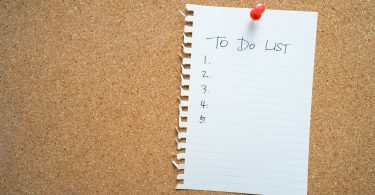Improving your catch play can be simple. For most teams, catch is part of the warm-up at the beginning of practice. Players may chat with teammates or see it as a transition from school to the “important” part of practice. However, playing catch is one of, if not the most important part of practice. Catch is something you do every day, giving you the opportunity to build good habits through quality repetition and focus. The vast majority of infield putouts require both catching and throwing. Therefore, infielders can benefit the most from a quality catch-play routine and focused catch.
Here are several ways to make the most of playing catch, but remember, it all starts with focus!
Throwing with Purpose and Intent
No talking while you are throwing or receiving a throw.
When you field a ground ball in a game, you are not talking or carrying on a conversation with anyone, are you? The level of focus required to make such a play would make it extremely difficult to do. We want to practice like we play. The first step to improving catch-play, and perhaps the most difficult, is to not talk and instead focus on what you are doing. If this is too difficult, save your chatter for between throws.
Now that you have complete focus on the task at hand, incorporate these other steps into your routine.
Pick a specific target (something small).
Every throw should have as specific a target as possible. Pick the logo of a shirt, hat, your partner’s hip, or something small. This will force you to focus and train you to not only throw to a specific area, but a specific target. Alternating from hip to hip or shoulder to shoulder is an advanced way of doing this after you have a single target down. By throwing specific, it will allow you to qualify your misses and help you assess what you can change.
For example, if I have no specific target in mind, hitting my partner anywhere in the body will look like a success and provide me with little feedback. But what if I’m throwing to the logo in the middle of his chest and my throw arrives above his left shoulder? That tells me that I’m not finishing the throw and I can work to make the adjustment. It also allows me to realize if I have miss patterns that need to be addressed (like always missing arm side). More on that below.
Let the ball be your feedback.
Work on creating proper backspin on your throws. Let the flight of the ball provide you with valuable feedback. Does your ball tail? Does it cut? What does this tell you about what you are doing? Can you keep it straight at various levels of throwing intent? Do your poor throws have a pattern to them? What does that tell you about where you are making mistakes? Much like the batting cage, where the ball will help you figure out what you are doing right and wrong, each throw you make can do the same if you watch it carefully.
Work on your spin.
Watch an MLB game and look at how many times the infielders are throwing the ball max effort across the diamond. You will find that it’s not as often as you might think. Certainly not as often as amateur players. Instead, they spin or use touch to get the ball to 1st on time. Explore how your wrist and hand can create spin and carry on your throws, even while keeping your effort level low. Exploring how to spin the ball and make touch throws for closer distances will help you make a variety of throws and save wear-and-tear your arm.
Throwing as a Full Athletic Workout
Keep active feet and make the ball be where you want it to be.
Focus on the position of your body so you catch the ball where you want. This means you are playing the ball and not vise-versa. It’s really easy to get lazy when you are just playing catch. Keep your feet active and move to the ball so you are always in an athletic position when you receive it. Try to catch the ball in the center of your body every throw. This will keep your feet moving and your focus locked in from partner release to catch. One throw you may have to take a few easy steps back and the next a few hard steps in and to the left. It will keep you on your toes. Without even thinking about it, you are working on your judgment skills and athleticism. Always make sure you secure the ball from catch to the exchange or transfer to the throwing hand.
Work on transfer.
As infielders, it is an essential skill to be able to get the ball out of your glove as quickly as possible. Every throw you receive is an opportunity to practice this valuable skill. You don’t have to fire the ball right back to your partner. Work on getting the ball in your throwing hand as quickly as possible and getting in a good throwing position. Try to stay short and compact, as you would want to be when you have a fast runner barreling down the line.
Incorporate position specific actions into the routine.
Improving your catch play requires effort. Put yourself in as many different athletic positions that you might find yourself in during a game. Work on going from that position to throwing. This will force you to stay athletic and establish a good feel for how to use your body.
Several examples of this are:
- As you move beyond 90 feet, take throws from your partner as if you are a relay man on a cutoff. Work on catching the ball with your shoulders turned, having your back foot hit the ground just after the catch, and shadow a relay throw. Work on moving to the ball so that you are catching the ball at chest height.
- Shadow some double play turns. Orient yourself so that your partner’s throw simulates a double play feed and apply the proper catching/footwork technique.
- Get into a variety of fielding positions and then throw from there, replicating the different arm angles you’ll use to make outs. This could include right at you, forehand, backhand, diving, etc. Get creative here.
- Throw from various arm angles. As an infielder, you must get comfortable throwing with your body and arm angles in different positions. This isn’t goofing around. It is focused repetitions that can help you make a difficult play in the game.
- Throw on the run. Get creative here and have fun here. Quarterback scramble drills are a favorite. Put yourself in a variety of dynamic (moving) positions. Make throws that simulate things you may have to do in the game (Throwing across your body, throwing on the run, changing direction quickly and throwing, etc.)
Play quick catch.
You probably already do this as a drill, but doing it more will not hurt. Work on the transfer and get rid of the ball as quickly as you can. You may find yourself getting tired or out of control the more throws you make. Find ways to slow it down by cutting out unnecessary movements and being more efficient and in control. By slowing things down mentally and physically, you will speed up your exchange time and gain what in the game will be valuable time to get guys out. Work on establishing a rhythm.
Play Multi-Partner Catch.
In games, we rarely return a throw or a batted ball to where it came from. To make catch play more game-like, have multiple partners and throw the ball to anyone but who you received it from. You can get creative with the distances between partners as well. Being able to switch seamlessly between a short, long, and intermediate throw is an important game skill to have!
Infielders control the defensive tempo of the game. There is a lot riding on being able to catch and throw efficiently and accurately. So, you should be improving your catch play whenever you can. Working on your skills during practice instead of using catch as a time to chat with friends will help you take your infield game to the next level without having to put in any extra time.
For more information on the importance of quality catch play and getting recruited, check out why recruiters are watching you play catch before they offer you a scholarship and improving your overall game through quality catch. Both are must-read articles for serious college bound players. For access to all of KPB’s catch play resources, click here.







